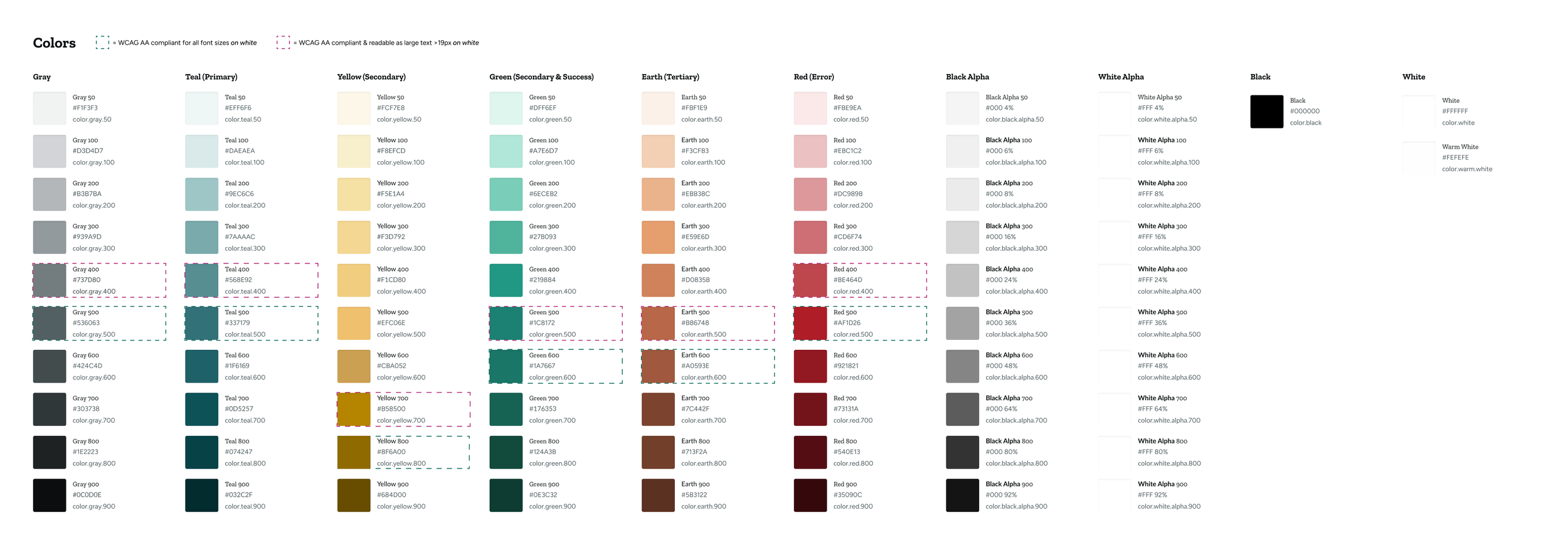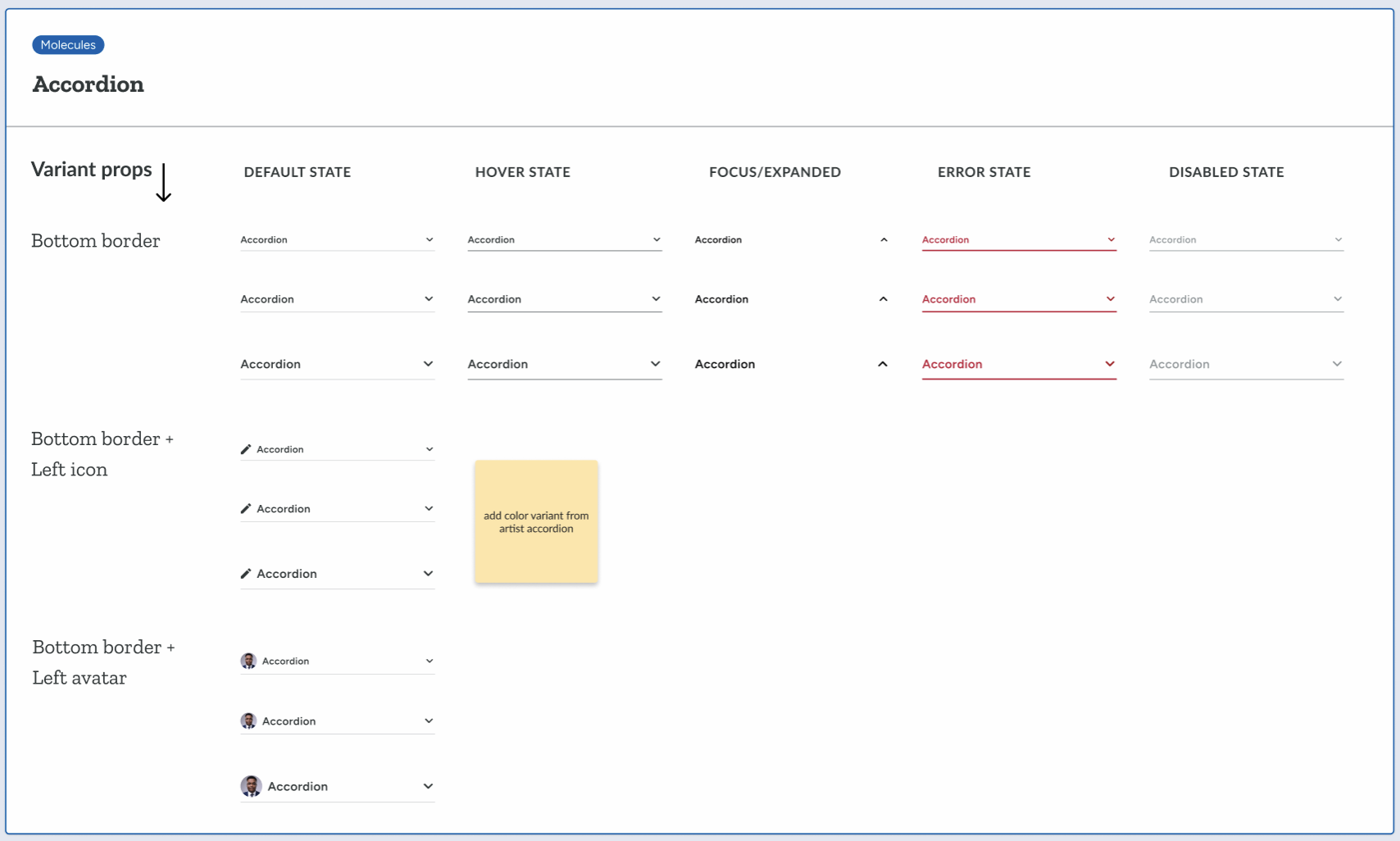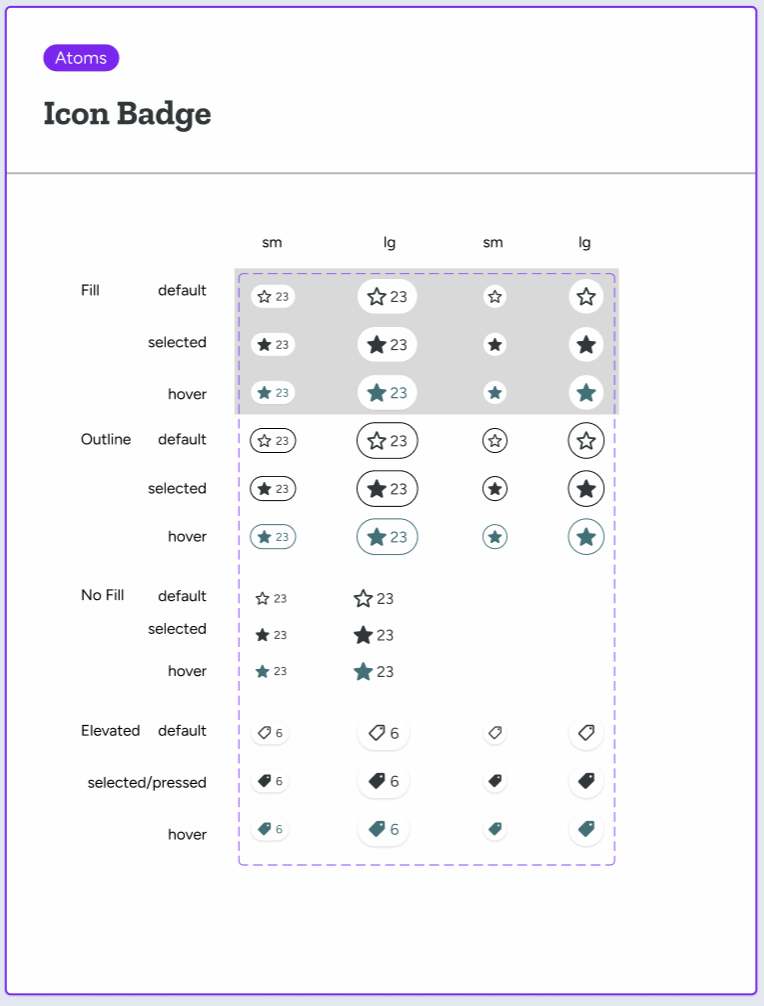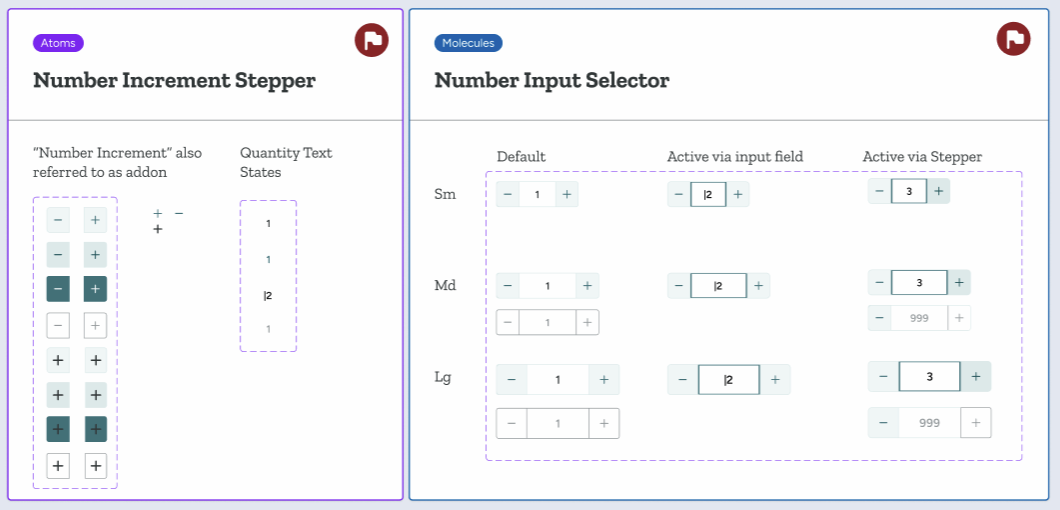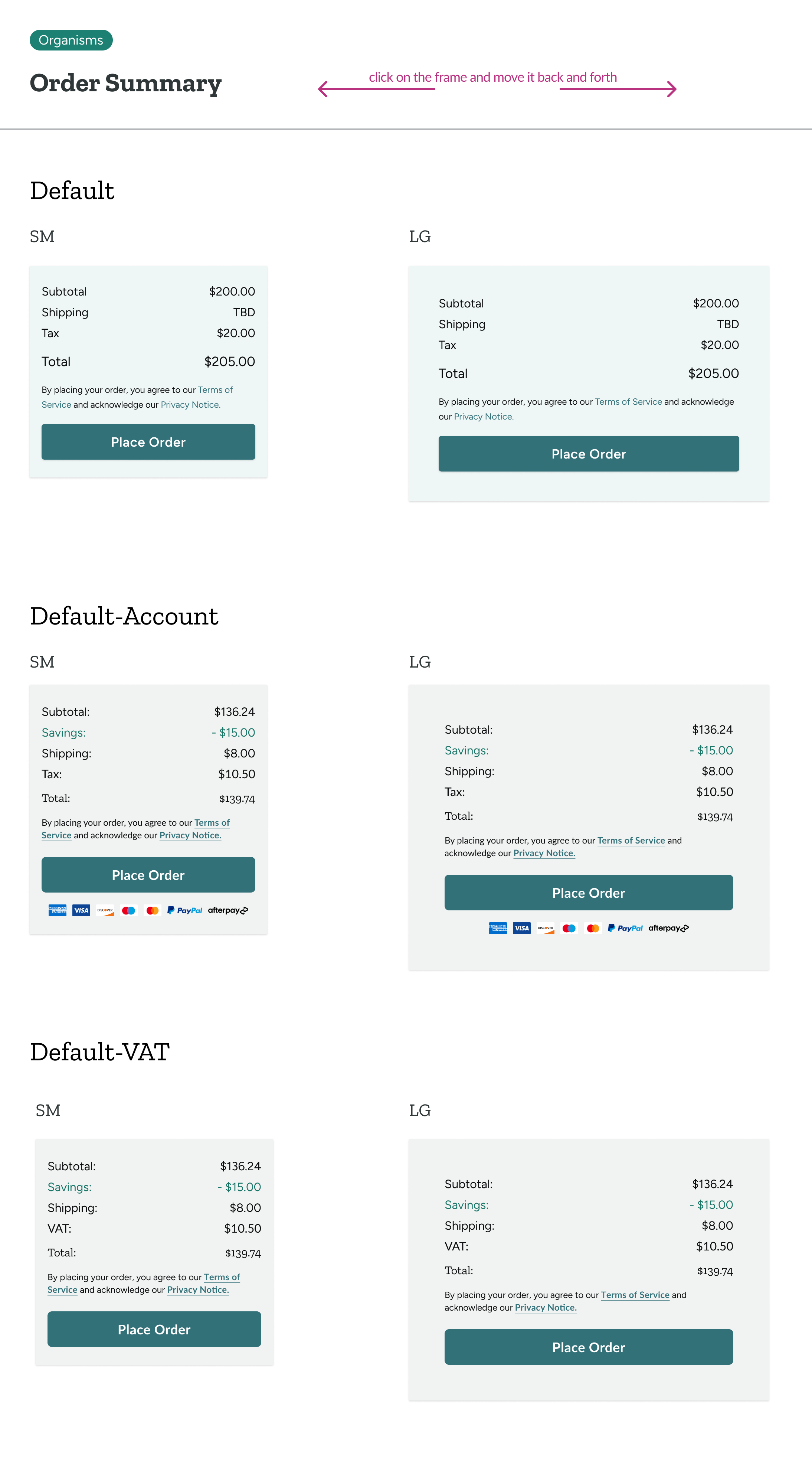Systems Design
Defining a shared “language” | Creating buy-in | Building from the ground up
I helped develop and maintain an initial design system to ensure consistency across platforms, codebases, and systems.
This included contributing to the creation and maintenance of internal accessibility standards, documentation, and best practices.
But first, why was this worth all the effort?
Designers and developers were duplicating work
The user experience was visibly and functionally inconsistent
There were communication breakdowns between teams—from meetings to JIRA tickets
Team:
I was the primary design advocate with 2 other UX Designers, 1 UX Researcher, teams of project managers, developers, and marketing, plus content editors.
Constraints:
Leveraged MUI, Chakra UI, Material Design and Content Management Systems. Overall hesitant and skeptical of change.
How we defined success:
Visible progress through an iterative, phased approach
Cross-team adoption by design, engineering, and marketing
Faster workflows in design, documentation, developer handoff, and Design QA
Simple, scalable components to test as we re-platformed and re-branded
A shared language that improved team alignment
A few key benefits of designing with smart systems in this video demo:
Improved “building blocks” for optimal mobile design, even with dense content
Easier scannability because the interface is consistent and predictable
Faster time from ideation to launch
More details and case study information available upon request!
